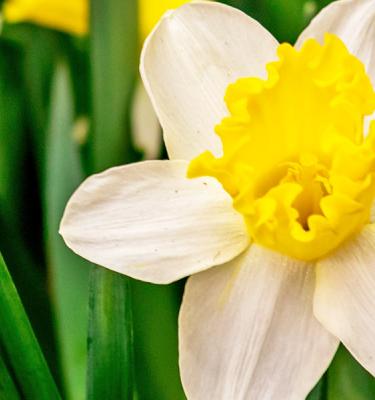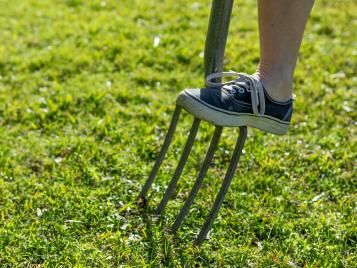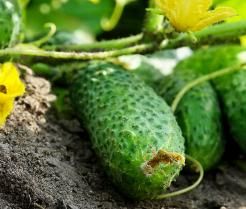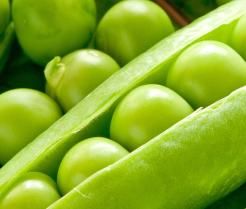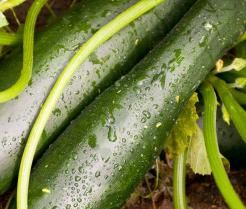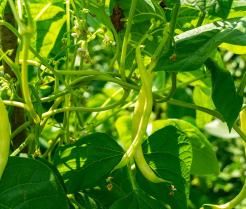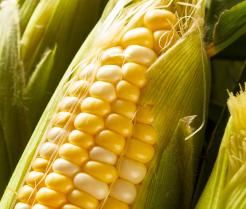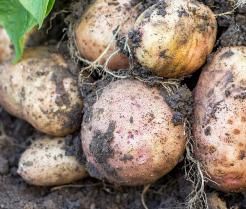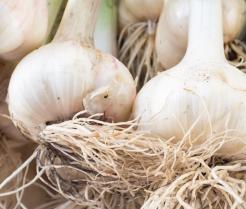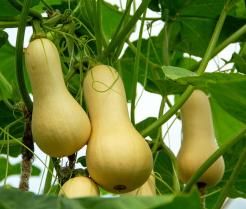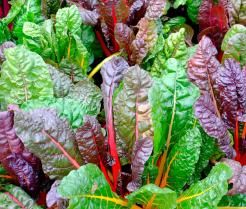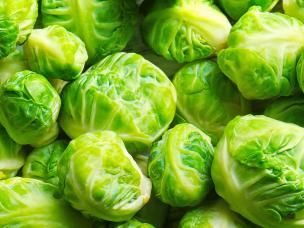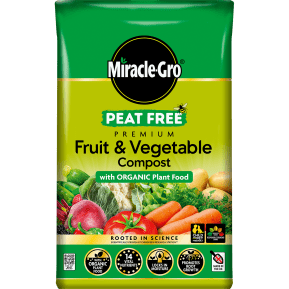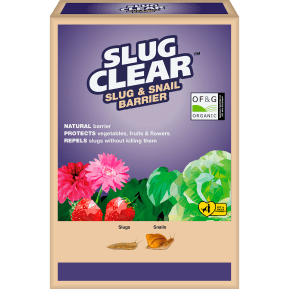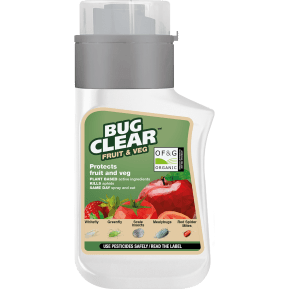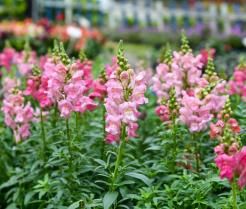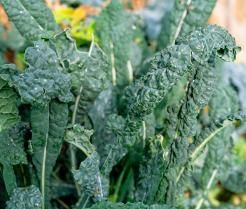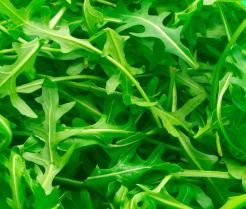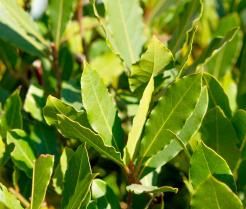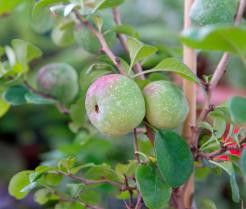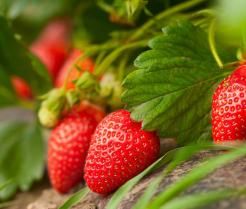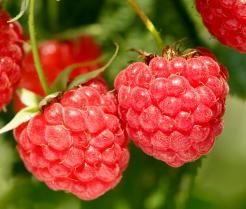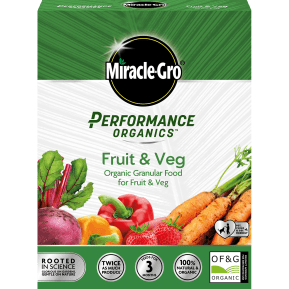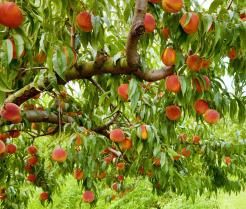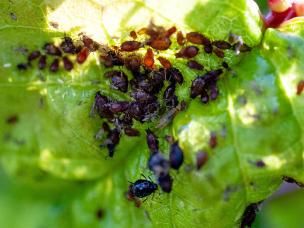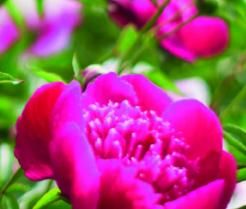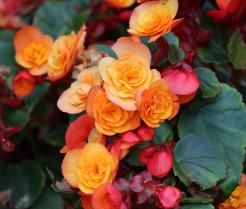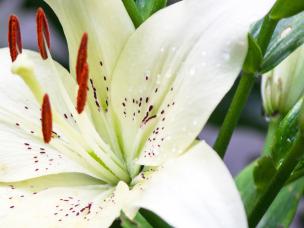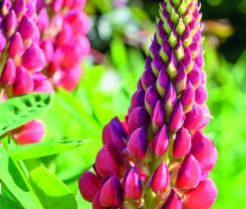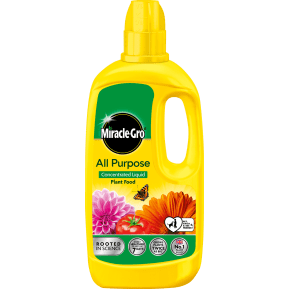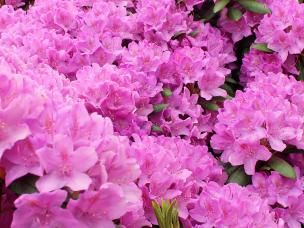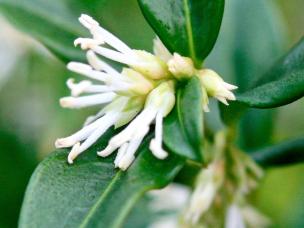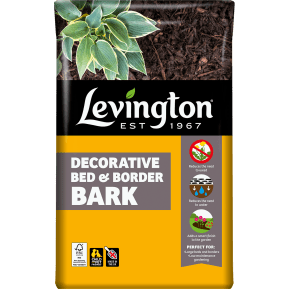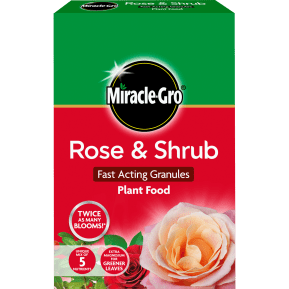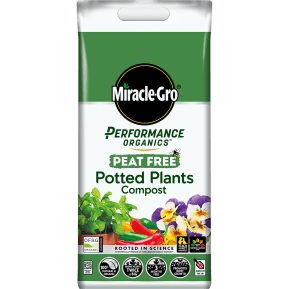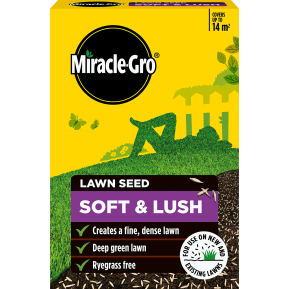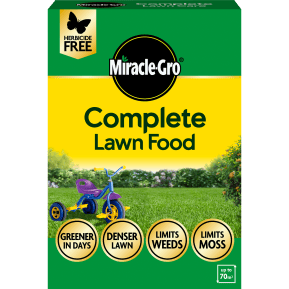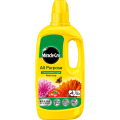April Gardening: Your Monthly Garden Guide
April is the height of spring and there are plenty of jobs to do in the garden. The days are getting longer and warmer, and the garden is full of fresh new life and vibrant colours, but it can also be a fickle month so keep an eye on the weather forecast. Cold nights, frosts and general low temperatures are all possibilities, which can have an impact on what to grow in April, affecting young, new growth, bedding and young vegetable plants. And, of course, there’s always the chance of April showers, so plan ahead and make sure you’re prepared for every eventuality.
What to plant in April and other seasonal gardening tips
If you’re asking yourself what to plant in April, it’s likely through option paralysis rather than a lack of ideas. April is a busy, fun and very rewarding month for gardening. So, whether you want to know what fruit and veg to plant in April or you’re looking for some advice on pruning your plants and flowers, simply choose a category below from our essential April gardening guide.
Whether you have a vegetable patch or you’re busy growing lots of fruit and berries for those refreshing fruit salads, April in the garden is going to keep you on your toes. There’s a surfeit of fruit and veggies to grow and harvest, while the warmer weather will bring renewed growth and, with it, potential pests, so it’s a good idea to give your garden some TLC.
Vegetables
When it comes to tending your vegetable patch, April is likely the month you’ve been waiting for. There is a veritable feast of vegetables to plant in April, both inside in the greenhouse or out in the garden. It’s also the time of year when a lot of your leafy green vegetables will be coming into season and ripe for the harvest. So, make sure your tools are all sharpened and cleaned before you jump in because they’re going to get a lot of use this month!
What vegetables to plant in April
Whatever your culinary tastes or skill level, there are plenty of vegetables to plant in April. Try to plant a variety of different types to give your patch the best chance of success over the coming months, as the weather in the UK is rarely predictable.
If you have somewhere indoors to sow vegetables (a greenhouse is ideal, but a conservatory or windowsill will also work well) then you may be surprised by just what you can grow. Any of the following can be planted indoors in April:
- Beans (for example runner beans or French beans)
- Marrow
- Courgette
- Squash
- Sweetcorn
- Cucumbers
- Aubergines
- Celery
- Globe artichokes
Plant seedlings of the following
When it comes to planting vegetables outside in April, you’re going to find yourself spoilt for choice. The following veg can all be sown outside directly into well-prepared soil (containers, beds and borders will all work, whether in a garden or on a balcony). Remember to use a mix of soil and an organic, peat-free compost to help control water availability and encourage strong root growth.
- Beetroot
- Brussels Sprouts
- Cabbage
- Carrots
- Leeks
- Lettuce
- Onions
- Garlic
- Parsnips
- Potatoes
- Radishes
- Spinach
- Swiss chard
- Summer cauliflower
- Peas
You should also chit and plant out second early potatoes at the beginning-middle of the month whilst doing the same for maincrop potatoes from mid-April onwards.
Growing vegetables in April
With plenty of cold spells, the weather is still a little unpredictable during April, so make sure you protect any early outdoor sowings with horticultural fleece or polythene. Continue to do this until you’re sure there’s no risk of a frost. Try to thin out rows of seedlings where possible and as soon as they are large enough to be handled.
Pea plants will be growing rapidly at this time of year, so make sure you support them with stakes, mesh, green support or wire netting.
It’s also the time of year to be on the lookout for pests. Keep the edges of your carrots buried to help prevent carrot root fly and be on the lookout for slugs and snails. Treat them if you’re already seeing the damage and put preventative measures in place or they’ll make a meal out of your vegetables before you have a chance to harvest them.
After all of that, if you still have the energy, it’s time to start looking forward to Summer and preparing your runner beans for planting.
What Vegetables to harvest in April
If you already have crops growing, or if you’re just interested to know what’s in season, the vegetables usually ready to harvest in April are:
- Purple sprouting broccoli
- Asparagus (when the spears are no more than 18cm tall)
- Rhubarb
- Radishes
- Spring onion
- Chard
- Leeks
- Kale
- Spring cauliflowers & cabbages
- Lettuce & rocket
Fruit
There are very few fruits that are in season in April so you’re unlikely to find yourself gathering much of a harvest this month. It is a good opportunity, however, to get on top of lots of maintenance, and there are even a few berries and other fruits to plant in April.
What fruits to plant in April
A lot of fruit tends to ripen near the autumn, but April is a great time of year to plant young fruit trees and bushes in time for the next harvesting season. The following can all be planted outside in April:
- Raspberry canes
- Blackberry canes
- Strawberries
If you have a greenhouse or a suitable space to grow fruit inside, you can also plant the following during April:
- Tomatoes
- Melon seeds
- Strawberry seeds
These fruit trees and bushes can all be planted in April:
Growing fruit in April
Typically, there’s not a huge amount going on when it comes to fruit in season for April, so it’s a good opportunity to carry out some maintenance and give your plants some much needed love after the winter.
Any fruit trees growing in pots will need to be liquid fed. Use a balanced feed every two weeks and mulch any fruit trees in the garden with a peat-free compost or farmyard manure.
If you planted strawberries in September and they are in their first year, make sure that you de-blossom them to help with their initial establishment. If the weather allows, give any covered strawberries sometime in the sun, which will help with ventilation.
If you’re growing any citrus plants in the greenhouse, mist or dampen them down when the flowering begins. You should try to maintain a minimum temperature of 14°.
Once you’ve done that, it’s worth doing a spot check on all of your fruit plants and trees for potential diseases and pests. Some things to look out for are apple and pear scab, which can be treated through pruning to prevent the spread of disease. Powdery mildew on grapes, peaches and gooseberries can also be a problem at this time of year – again, remove infected parts of the plants and be careful not to let the spores spread. If you have a greenhouse, be on the lookout for red spider mite and aphids on your strawberries. If you have a particularly bad infestation, you should remove the affected plants immediately – otherwise you can control the problem using a pest control.
Finally, towards the end of the month, thin peach and apricot fruitlets (small or immature fruits) – the trees will likely grow more than they can handle.
Whether your favourites are flowers, plants or shrubs, there are plenty of options when it comes to choosing what to grow in April. It’s a particularly good time of year for bulbs and evergreens but, even if you don’t decide to plant anything new, it’s still a busy time in the garden as the warmer, wetter spring weather brings new growth.
Flowers and bulbs
When thinking about what flowers to plant in April, it’s a good time to start planting summer-flowering bulbs and you might even consider some wildflowers. You’re likely to see a lot of growth among your existing flowerbeds this month, so it’s a good opportunity to carry out some pruning and maintenance to keep them under control and ready to look their best during summer.
What flowers and bulbs to plant in April
Hardy annual flowers – such as sunflowers and poppies – can be planted outdoors in April. Otherwise, it’s a perfect time to buy and plant summer-flowering bulbs, such as:
- Begonias
- Dahlias
- Gladioli
- Lilies
- Peonies
- Crocosmias
Consider using an organic, peat-free compost specially designed for bulb plants. This will encourage fast root growth – just make sure that you fill the compost to twice the depth of the bulb so that the roots have something to grow into.
Although wildflowers can be grown all year round, sowing in April will often deliver the best results. Remember to check your chosen wildflower mix as occasionally mixes will contain wildflower species that are more suited to sowing at another time of year.
Growing flowers and bulbs in April
In April, you should deadhead spring-flowering bulbs when the flowers fade. These include:
When you deadhead, make sure that only the flowerhead is removed - leave any leaves or foliage to allow your plants to store energy. You can simply pinch the flowers out between your finger and thumb. Alternatively, a quick snip with secateurs is always effective. Deadheading your flowers prevents your plants from seeding and encourages them to direct that energy towards producing new flowers, keeping your garden looking vibrant for longer. Once you’ve finished deadheading, it’s important to give the flowers a liquid feed.
If you have any penstemons, you should prune these in late April (only when you’re sure that we’ve seen the back of any winter weather), or early May. Once new shoots appear at the base, cut the old shoots back to the base. If there are no new shoots, simply cut just above the lowest set of leaves.
Once you’ve finished your April planting and pruning, there are just a few bits of flower maintenance to take care of.
To give peonies the best chance of growing to their fullest, put a support in place before they get too tall. This will help the stems to grow and for the flowerheads to stand tall. They will also be much stronger for it.
Divide primroses once they have finished flowering and take basal stem cuttings from perennials, such as delphiniums and lupins.
With cold nights still lingering well into the month, protect any tender flowers with a horticultural fleece overnight.
Plants and shrubs
If you’re wondering what plants grow in April, then evergreens are a popular choice for planting in the first half of the month, provided it stays relatively cool. As the month progresses, any existing bushes and shrubs in your garden are likely to be thriving in the wetter, warmer weather, so April is when your regular spring/summer maintenance is likely to start – make sure those garden tools are sharp.
What plants and shrubs to grow in April
Earlier in the month, and in cooler areas of the garden, you will still be able to plant and move evergreen trees and shrubs. These could include:
When planting new plants and shrubs or moving existing plants, use a mixture of soil and peat-free compost to help them settle into their new home. This will help to control water availability and encourage strong root growth. Just make sure that your compost mixture completely covers the roots.
Growing plants and shrubs in April
April is maintenance season for your plants and shrubs. Make sure you mulch the soil around any trees and shrubs with a t least a 5 - 7.5cm (2 – 3 inch) thick layer of peat-free mulch. This will improve the soil structure and help with water retention. You can also consider adding a naturally derived granular plant feed specifically designed for plants and shrubs.
Look out for damage on deciduous trees, including bacterial canker, and signs of blight on box and holly trees. Tie in the shoots of climbers as they grow, spreading them out evenly over their support, and tie honeysuckle and clematis regularly, twining them around their supports. Don’t forget to check the previous year’s hardwood cuttings as they may need planting or potting.
As we reach the end of April, pruning trees and shrubs becomes a regular and ongoing job in the garden.
Clip evergreen and conifer hedges now as they start to show signs of growth, and cut back any hedges that are becoming top heavy, too tall or bare at the base. Any smoke bush and elders can be cut back to retain their bright, young foliage.
Any spring-flowering shrubs such as forsythia and Chaenomeles should be allowed to finish flowering before pruning, and any lavenders can be lightly cut back once the cold weather has spent itself.
If you have hardy fuchsias, prune them once they come into bud by pinching out the tips to encourage summer growth. You can also remove dead, weak or crowded branches.
Flowers and bulbs
April is a busy time out in the garden as the warmer weather brings new growth, but it’s also a good time to start growing seeds indoors, so don’t put those pots and trays away just yet.
What flowers and bulbs to plant in April
The following can be sown in the greenhouse or another warm, dry indoor environment such as a windowsill or conservatory:
- Marigolds
- Petunias
- Nasturtiums
- Salvia
- Ageratum
- Zinnia
If you’re planting indoors, consider using a peat-free compost specially formulated for indoor use. Line the bottom of the pot or container with compost and ensure that it covers your bulbs or seeds. This will help control water availability and keep your flowers fed for up to three months.
Plant seedlings of the following
Growing flowers and bulbs in April
If you have a greenhouse, April is a good opportunity to consider applying a shading paint to your panes – especially if the weather is particularly warm. This will prevent your flowers from getting scorched. It’s also worth damping down the floor of the greenhouse with a splash of water in the mornings to increase humidity levels.
Disease can be rife at this time of year, so make sure you keep an eye on your flowers for signs of mould or any other damage. You can treat this with fungus control product but if the problem is endemic, you may need to consider removing the diseased flowers completely.
When it comes to lawn care in April, you’ll be somewhat at the mercy of the elements. Whatever happens, you’re likely to see some accelerated growth this month, so it’s a valuable opportunity to do some maintenance and repairs. Keep an eye on the weather to make the most of those dry days.
Lawn care in April
Hopefully you managed to get on the lawn in March and get your first mow done, but if the weather hasn’t allowed you to get out in the garden yet, try to give your grass a trim at the earliest opportunity.
April is also the ideal time to put in a new lawn, whether from turf or grass seed. The promise of warmer temperatures to come means that seed will quickly germinate and regular April showers will do their bit for lawn growth.
Lawn maintenance in April
April is the month for lawn maintenance and lawn renovation after winter. It’s an opportunity that is best not to miss.
April mornings tend to be quite dewy so try to mow the lawn in the afternoon to give it some time to dry. It’s a good time of year to get back into a regular rhythm of mowing, so cut the grass whenever it’s growing – this will likely be at least once a week, perhaps even more as the temperatures increase.
It’s best to try to keep it at the same height throughout spring if possible. For most lawns, this should be about 2.5 - 4cm (1 - 1.5 inches). However, if your lawn is subject to lots of wear and tear or heavy footfall, you can raise the height to 5cm (2 inches) and 7.5cm (3 inches) for very shaded areas. If you mow too low, you may weaken the lawn and allow weeds and moss to establish.
The grass is wetter and softer at this time of year, so be careful when you turn the mower, and make sure you clean the blades thoroughly and regularly to remove any wet grass that has become stuck to the bottom of the mower. Finally, remember to use a trimmer on your edges to keep them looking crisp and tidy.
Feeding your lawn in April
April is the time to get your spring lawn feed into your grass as the demands of winter will have taken their toll. Giving your lawn a good feed in spring is crucial for a healthy lawn throughout the rest of the year, so don’t miss this opportunity. Use a granular feed that supplies a regular amount of nutrients over several weeks for the best results. Apply this evenly over the lawn at the recommended rate. Consider using a lawn spreader if your feed doesn’t come in a spreader pack. using a lawn spreader.
April lawn repair and treatment
On top of your standard lawn maintenance in April, you should also consider carrying out repairs and removing weeds.
Repair any damaged or bare areas with fresh grass seed or a lawn patch repair product. The wet weather and warmer temperatures will provide the ideal conditions for new seed to bed in.
April is a crucial time of year to tackle moss in particular. Choose a moss control containing iron sulphate and apply it to your lawn according to the instructions. Allow the moss to blacken – this should take two to three weeks – before raking your lawn to remove it. If the moss continues, repeat the process every three to four weeks.
Lawn aeration in April is essential. This is when the soil is mostly likely to be naturally moist and it is suitable for the holes to be set effectively. The grass also has an opportunity to heal properly.
Use a garden fork or hollow-tined aerator to improve drainage and help reduce waterlogging problems. Once you’ve aerated your lawn, apply a plant feed and top dressing. This will give your grass the extra ingredients it needs to thrive and become a thick green lawn.
While autumn is the optimal time for heavy-duty scarifying, it’s a good idea to do some light scarifying in April. Use a spring-tine rake to remove dead grass, thatch and other debris that will prevent healthy grass growth.
Finally, if the ground is relatively firm, lawn rolling will help consolidate any areas raised by worms and frost. If the ground is too soft, wait until May.
